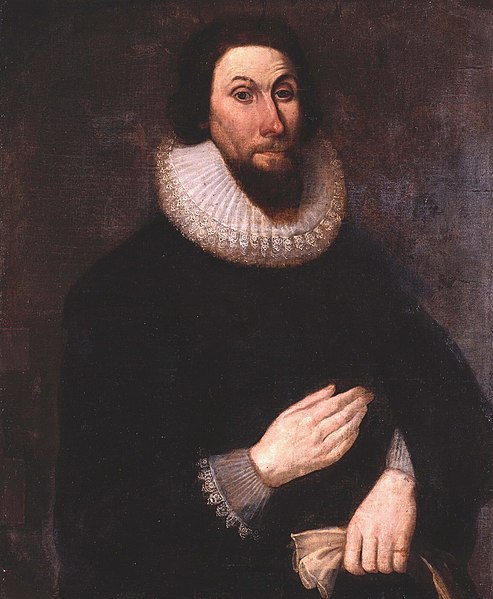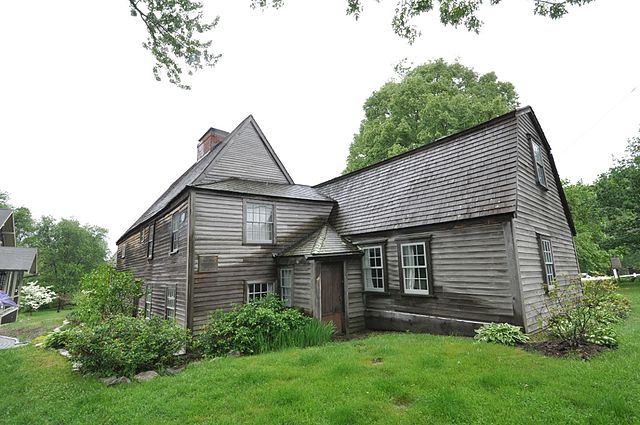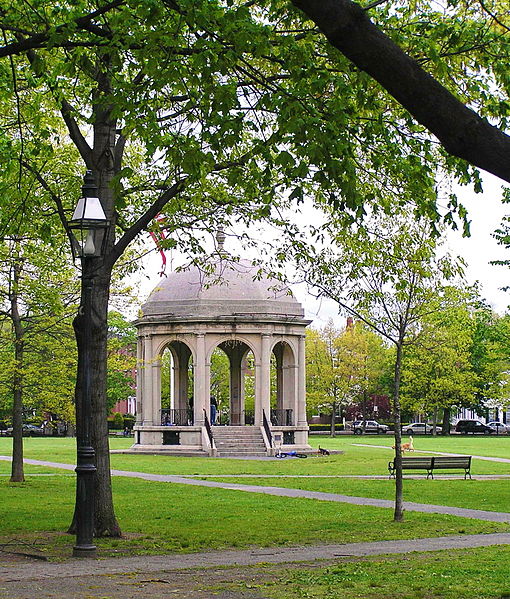John Endecott, regarded as one of the Fathers of New England, was the longest-serving governor of the Massachusetts Bay Colony, which became the Commonwealth of Massachusetts. He served a total of 16 years, including most of the last 15 years of his life. When not serving as governor, he was involved in other elected and appointed positions from 1628 to 1665 except for the single year of 1634.
John Endecott
The Endicott Pear Tree in 1997
Illustration by Howard Pyle showing Endecott defacing the English flag. Pyle has incorrectly depicted the flag as a Union Jack, when the flag at the time only contained Saint George's Cross.
Engraving depicting Endecott's men landing on Block Island
The Massachusetts Bay Colony (1628–1691), more formally the Colony of Massachusetts Bay, was an English settlement on the east coast of North America around the Massachusetts Bay, one of the several colonies later reorganized as the Province of Massachusetts Bay. The lands of the settlement were in southern New England, with initial settlements on two natural harbors and surrounding land about 15.4 miles (24.8 km) apart—the areas around Salem and Boston, north of the previously established Plymouth Colony. The territory nominally administered by the Massachusetts Bay Colony covered much of central New England, including portions of Massachusetts, Maine, New Hampshire, and Connecticut.
John Winthrop, who led the first large wave of colonists from England in 1630 and served as governor for 12 of the colony's first 20 years
Constructed in 1641, the Fairbanks House is a First Period home with clapboard siding
Salem Common was established as a village green in 1667
Quaker Mary Dyer was hanged on Boston Common in 1660








